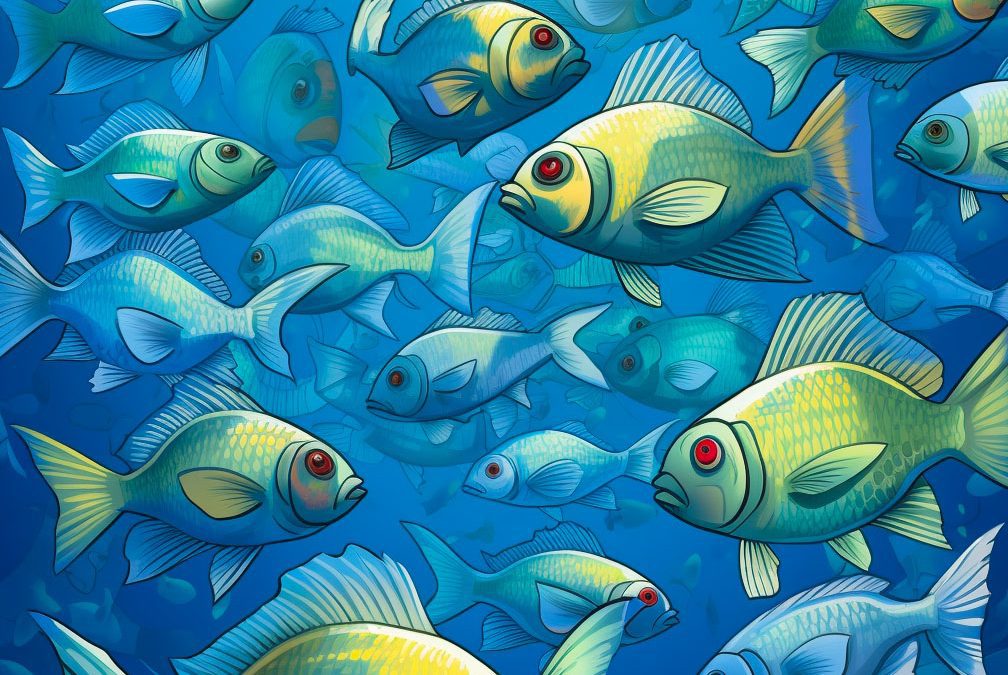Introduction
Good day, fellow fishermen! If you’re anything like me, Mike, you enjoy the rush of hooking a large bass. During the bluegill spawn, which normally takes place in the spring and early summer, is one of the finest times of year to catch bass. Based on my personal knowledge and study, I’m going to offer some advice and strategies for catching bass during the bluegill spawn in this article.
Understanding the BlueGill Spawn
Let’s start by discussing what the bluegill spawn is and why it’s important for bass fishing. Panfish called bluegills lay their eggs in shallow water in the spring and early summer. They build nests in the sand or gravel bottom, where they lay their eggs, which after a few days hatch into fry. This procedure draws bass and other fish that feed on the eggs and fry.
Targeting bass that are feeding on bluegills requires knowledge of the duration and timing of the bluegill spawn. The spawn typically starts when the water temperature reaches between 65 and 70 degrees Fahrenheit. Typically, it lasts a few weeks to a few months, depending on the environment and the climate.
Bluegill tend to gather in places with ideal nesting conditions during the spawn, such as shallow water with some vegetation or structure. They can be found in bays, coves, and other safe places where the current and waves aren’t too strong.
As opportunistic predators, bass will frequently linger in these locations to feast on bluegill. Largemouth bass, who are renowned for their fondness of bluegill, are a prime example of this. It’s important to keep in mind though that not all bass will eat bluegill during the spawn. Depending on the availability and environment, some might concentrate on other prey like crawfish or insects.
Targeting Bass During The BlueGill Spawn
Let’s discuss how to catch bass at this time now that we are aware of when and where the bluegill spawn occurs as well as why it draws bass to the area. Here are some advice and strategies I’ve found to be effective:
Look for productive areas.
As was already noted, during the spawn, bluegill frequently gather in particular locations. There are some general standards that apply, although these regions can change based on the place. Look for shallow water that has some structure or vegetation because bass can ambush bluegill there and these features give cover for them to spawn. Additionally, pay attention to the clarity and temperature of the water since these elements can influence bass behavior.
A few excellent locations to check out during the bluegill spawn are:
- Weed beds
- Laydown logs or branches
- Rocks or boulders
- Tidal creeks or backwaters
- Docks or other man-made structure
Choose the right lures and presentations.
It’s time to select the ideal bait and presentation to entice the bass once you’ve located a suitable region. Several of my favorite lures and fishing methods that can be used during the bluegill spawn are as follows:
Soft plastic worms or creature baits in fruit-inspired hues like watermelon or pumpkin green. To allow them to glide through the cover where bluegill are nesting, rig them weedlessly or with a minimal weight.
topwater lures that resemble bluegills struggling on the surface, such as buzzbaits or poppers. These are particularly useful when there is little light or when the bass are actively feeding.
In areas where bluegill may be sheltering from predators, such as under rocks or dock pilings, jigs with a crawfish or bluegill pattern skirt and trailer can be effective.
Spinnerbaits with gold or copper blades, which can be worked through shallow vegetation or along drop-offs, can mimic the flash of a bluegill that is escaping.
Whatever lure you decide on, it’s crucial to experiment with your presentation until you figure out what the bass are responding to. To elicit a reflex strike, try gradual retrieves punctuated by pauses and twitches or quick, erratic retrieves. Fan casting an area with various lures is another option you may try until you find what works best.
Fish in shallow water and around cover.
Bass are frequently found in shallow water close to the shoreline during the bluegill spawn. The bluegill are nesting here, making it easy for bass to ambush them. Work your lure through any cover or structure you see while keeping it near to the bottom. In these places, bass will frequently hold and pounce on any bluegill that approach too closely.
The bluegill spawn is a good time to sight fish as well. Bass on their spawning banks may be visible if the water is sufficiently clean. Find circular depressions in the sand or gravel that are being protected by a male bass. In shallow water, these beds can be extremely apparent, and a cleverly positioned bait can trick the bass into believing a bluegill is heading into the bed.
Techniques for Catching Bass During The BlueGill Spawn
After discussing some basic advice for pursuing bass during the bluegill spawn, let’s move on to some particular strategies that can increase your catch rates.
Bass fishing by sight on spawning grounds.
As previously indicated, sight-fishing for spawning beds is a productive method for catching bass during the bluegill spawn. This calls for crystal-clear water, excellent vision, and a quiet approach to prevent startle the fish.
Take note of the behavior of the bass when you see it on a spawning bed. It can be cruising around seeking for stray bluegill to eat or it might be sedentary, guarding the eggs. Select a lure and presentation that suit the circumstance after you have determined the animal’s behavior.
For instance, use a finesse worm or creature bait rigged weedlessly if the bass is stationary on the bed. Cast it past the bed and carefully move it in the direction of the fish, taking care not to approach it too closely should you scare it. Try a faster, more aggressive presentation, such as a spinnerbait or topwater lure to simulate running bluegill, if the bass is actively feeding.
Topwater tactics for pursuing bass with aggression.
When bass are vigorously feeding during the bluegill spawn, topwater lures can be quite effective. For this circumstance, buzzbaits, poppers, and walking baits like the Zara Spook are some of my preferred topwater lures.
It’s vital to experiment with the retrieve speed and cadence when utilizing topwater lures until you find what the fish are looking for. In calm water, a slow, steady retrieve can be effective, whereas a quick, erratic retrieve can
be more efficient when the weather is choppy or windy. To mimic the movement of a bluegill that is running, vary your pauses and twitches, and be prepared for forceful surface hits.
During the bluegill spawn, I frequently use the “walk the dog” retrieve with a Zara Spook as a topwater method. To make the lure dart back and forth across the water surface, you must repeatedly snap the rod tip side to side. Bass may find the commotion and noise appealing, especially in poor light or while they are actively feeding.
throwing and flipping the cover.
Flipping and pitching require dropping the lure vertically into cover, such as weed beds, logs, or docks, utilizing a bigger weight and shorter line. These methods can be successful when bass are tightly clinging to cover and ambushing prey that approaches too closely during the bluegill spawn.
Cast your lure near to the cover and allow it to sink to the bottom to flip or pitch. The lure should then be pulled up and out of the cover by lifting the rod and reeling in any slack line. Once you receive a bite, you may drop it back down and continue the procedure. When flipping and pitching, it’s crucial to be methodical and patient because these skills can take some time to master.
I prefer to use a jig or creature bait that mimics bluegill or crawfish and has a weedless hook for this technique. I can drop the lure straight down into the cover without getting snagged by using a larger weight and a shorter line.
For picky bass, use slow presentations.
Not all bass will be actively feeding while the bluegill spawn is occurring. Particularly if they’ve seen a lot of lures or fishing pressure, some may be more picky or suspicious. In these circumstances, slowing down your presentation and utilizing finesse tactics can be beneficial.
An effective method for picky bass is the Carolina rig. This entails using a long leader with a little bead to cover the knot between your weight and lure. The weight maintains the lure in contact with the bottom where bluegill are nesting, and the longer leader allows it to move more naturally in the current or from a light twitch.
I enjoy using a soft plastic creature bait or worm in a natural hue, such as watermelon or green pumpkin, as the lure. Picky bass may find this presentation appealing since it resembles a bluegill or crawfish that is gently moving down the bottom.
Making the Most of the BlueGill Spawn
Now that you are equipped with some advice and methods for capturing bass during the bluegill spawn, let’s discuss how to make the most of this period and guarantee a long-term sustainable fishery.
Use catch-and-release techniques.
Bass are frequently in shallow water and exposed to fishing pressure during the bluegill spawn. To maintain a healthy and sustainable bass population, catch-and-release fishing is crucial. If you do decide to retain any fish, make sure they are within your daily bag limit and of legal size.
Avoid squeezing or harming the bass’ internal organs when releasing them by handling them rapidly and carefully. As soon as the hook is out, release the fish back into the water gently using a pair of pliers or a hook remover. They could get hurt if you throw them back into the ocean.
identifying and catching larger bass strategies.
It can be challenging to target larger fish when there are a lot of lesser bass present during the bluegill spawn. There are, however, a few tactics that can assist you in catching the larger ones.
One tactic is to fish with larger lures or present the fish slowly, which can deter smaller bass from charging. Instead than fishing directly on top of the spawning grounds, another tactic is to fish in deeper water nearby. Larger bass can be waiting for an easy meal to swim past in surrounding drop-offs or channels.
Be able to adjust to shifting circumstances.
Finally, it’s critical to be flexible and willing to modify your strategy as circumstances demand. Bass behavior can be impacted by water temperature, clarity, wind, and other variables, which can also alter the dynamics of the bluegill spawn. Pay attention to these variables and make the appropriate adjustments to your presentation and lure choice.
Conclusion
The information in this post should have helped you catch bass during the bluegill spawn. On the water, keep in mind to be patient, aware, and flexible. Engage in catch-and-release fishing to preserve a sustainable fishery for future generations. Tight lines!
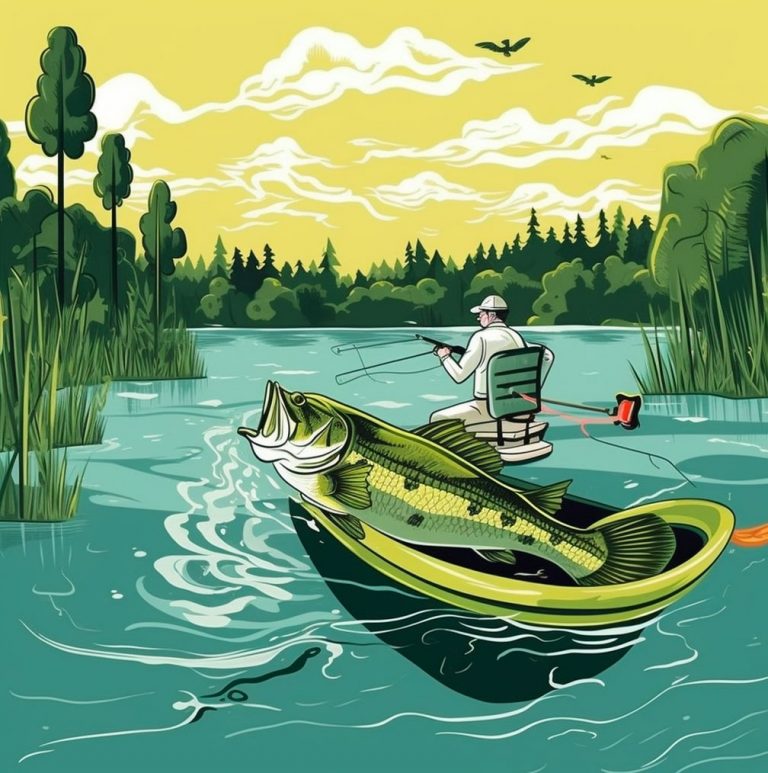
How To Catch Bass In April
Ah, April – my favorite month of the year. The flowers are blooming, the days are getting longer, and most importantly, the bass are starting to bite. As an avid fisherman, I know that this time of year is prime for bass fishing. But where do I find them? Well, let me tell you about […]
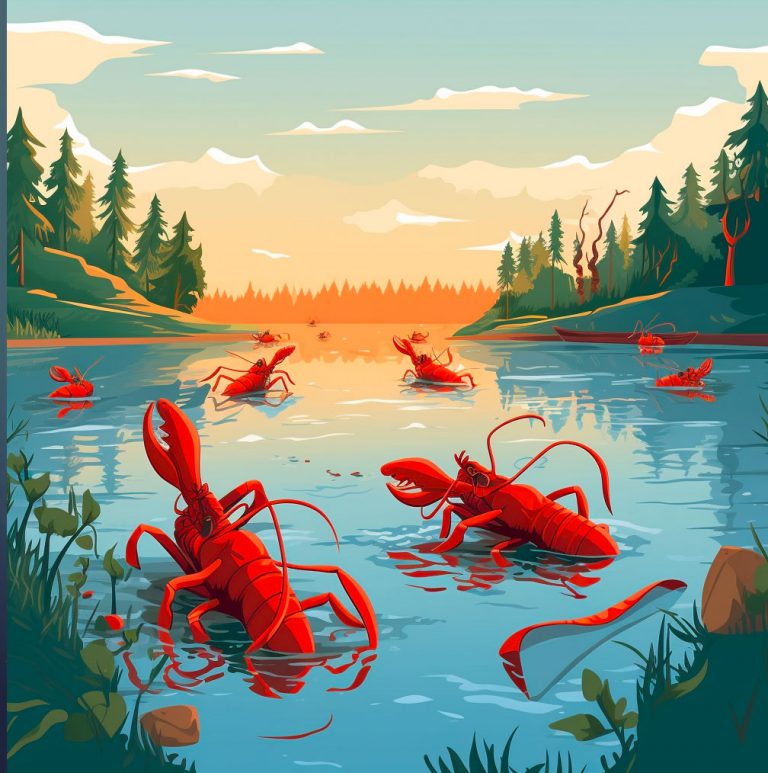
How To Catch Bass During Crawfish Season
As a seasoned angler, I have come to realize the value of comprehending the behavior of the fish you are attempting to catch and the prey they consume. The crawfish is one prey that is very active and common during the bass fishing season. I’ll share my knowledge and expertise on how to capture bass […]

How To Catch Bass During The Catfish Spawn
I love to fish for bass and am constantly seeking for innovative and fun ways to capture fish. Targeting bass during the catfish spawn is one strategy I have discovered to be especially successful. Fishing during this season might be challenging, but with the correct techniques and equipment, you can catch a lot of good […]
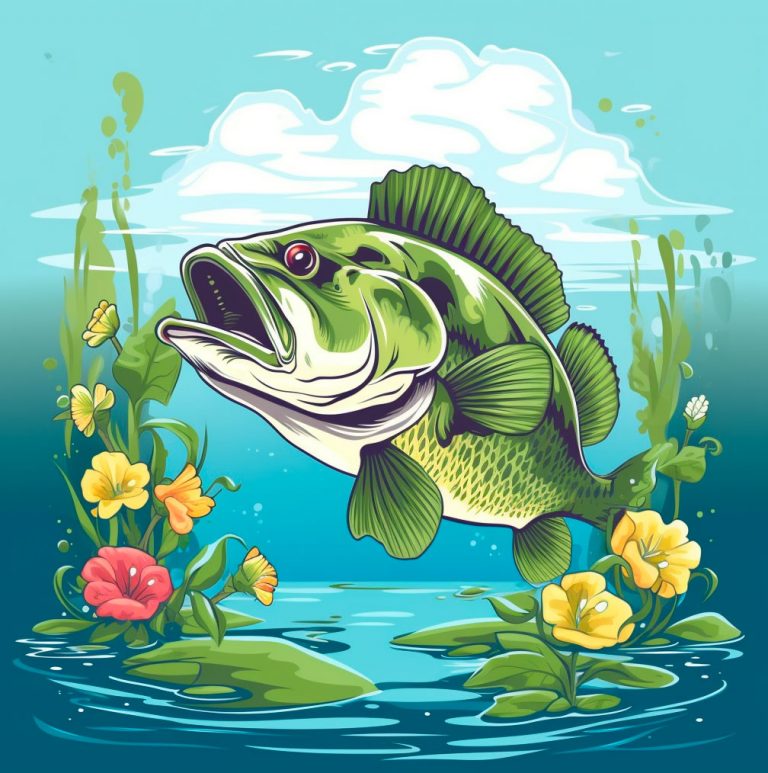
How To Catch Largemouth Bass In March
Seasonal changes have a significant impact on fish behavior, making certain times of the year better for fishing specific species. March is one such season, where largemouth bass fishing can be particularly fruitful. Whether you’re a seasoned angler or a beginner, understanding the behavior, habitat selection, and feeding habits of largemouth bass in March is […]
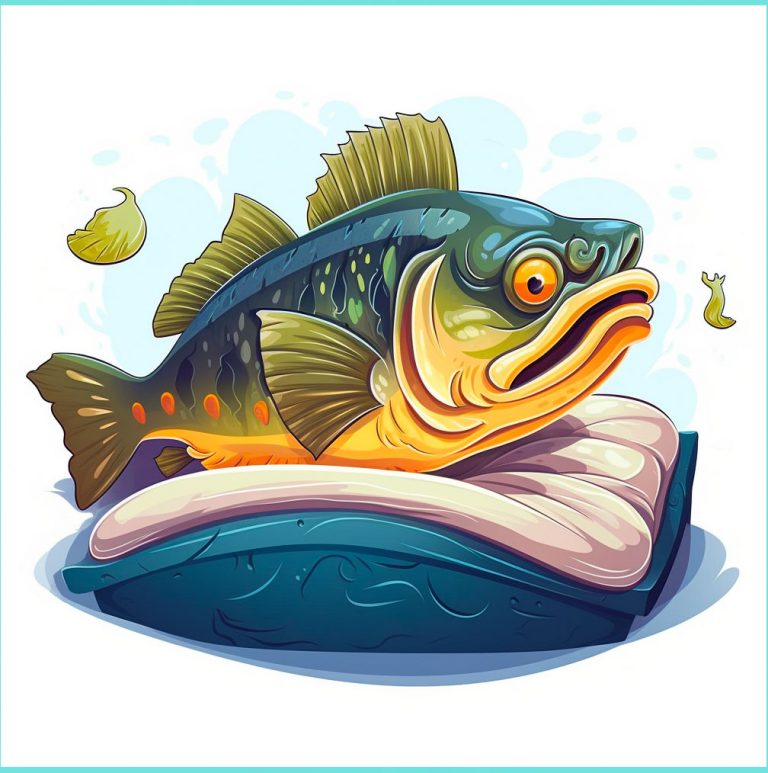
Top 10 Bass Fishing Lures For The Spawn – For Beginners
Spinnerbaits The top 10 lures for bass fishing during the spawn all start with spinnerbaits. Spinnerbait fishing may be a very productive strategy while bass are spawning. Spinnerbaits are adaptable fishing lures that are excellent for pursuing bass in many types of cover and structure. It’s crucial to concentrate on regions where bass are probably […]
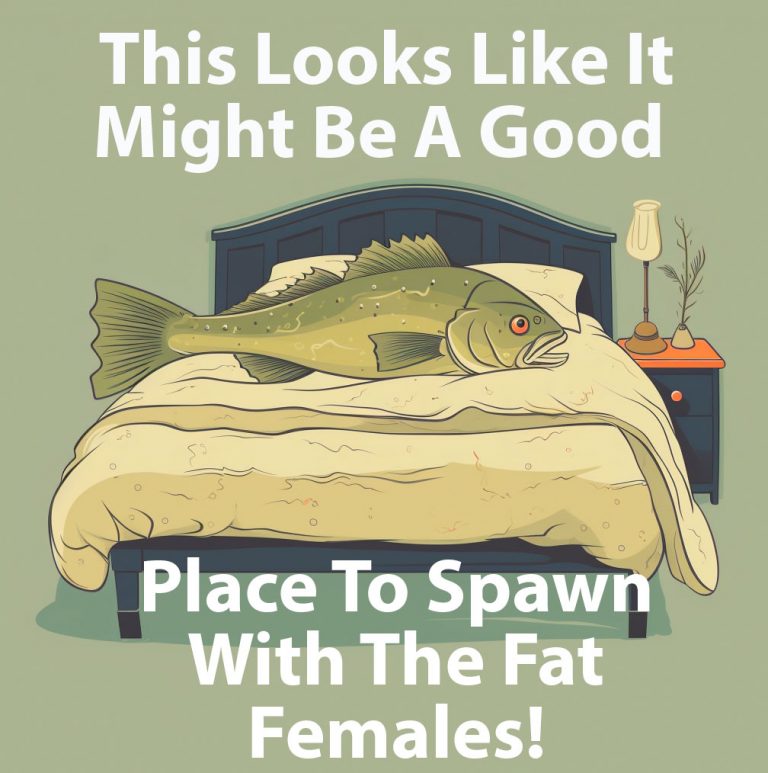
Top 10 Pre-Spawn Bass Fishing Lures
The top ten pre-spawn bass fishing lures will be covered in this post to increase your chances of catching your personal best bass this spring! The top 10 lures for bass pre-spawn fishing might vary based on the body of water and the weather, but the following are some typical lures that are frequently successful […]

